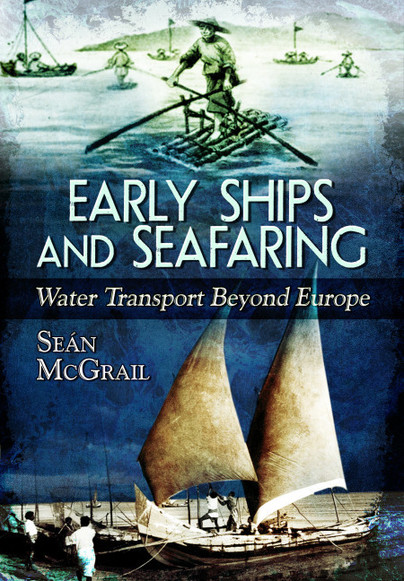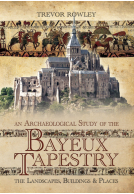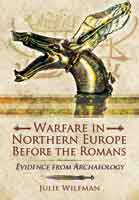Early Ships and Seafaring (Paperback)
Water Transport Beyond Europe
Imprint: Pen & Sword Archaeology
Pages: 240
Illustrations: 70 black and white illustrations
ISBN: 9781399019460
Published: 2nd November 2023
(click here for international delivery rates)
Order within the next 1 hour, 47 minutes to get your order processed the next working day!
Need a currency converter? Check XE.com for live rates
| Other formats available | Price |
|---|---|
| Early Ships and Seafaring Hardback Add to Basket | £19.99 |
| Early Ships and Seafaring ePub (41.9 MB) Add to Basket | £6.99 |
In this book, Professor McGrail's study of European water transport is extended to Egypt, Arabia, India, South-east Asia, China, Australia, Oceania and the Americas. Each chapter presents a picture of ancient boatbuilding and seafaring that is as accurate and as comprehensive as it is now possible to achieve. The early rafts and boats of those regions were, as in Europe, hand-built from natural materials and were propelled and steered by human muscle or wind power. This volume ranges in time from the Prehistoric period to today when a number of such traditional craft continue to be built.
In Egypt, not only have accounts, models and illustrations of ancient rafts and boats survived, but also a number of early vessels have been excavated some dated as early as the 3rd Millennium BC. In regions such as the Americas, on the other hand, where few ancient craft have been excavated, we are able to draw on accounts and illustrations compiled, from the 16th century AD onwards, by European seamen and explorers. In most regions of the world a variety of water transport has been built, limited only by the raw materials available. On the island of Tasmania, however, an early rise in sea levels cut contacts with Australia, leaving Tasmanians with simple types of Stone Age water transport that survived in use until Europeans discovered them.
Worldwide, much remains to be learnt about early water transport by excavation, and by ethnographic studies of those traditional rafts and boats that have survived.
Overall, I found this book interesting, but a little too dry sometimes. If you have a keen interest in the sea, sailing and ships, I think this would be excellent. There is an assumption that the reader will have a basic working knowledge of boats, such as what a punt or a boom is. I obviously did not, but that is nothing that a little googling can’t overcome.
Michelle McMenamin, GoodReads
Read the complete review here.
This book follows an earlier book by Prof McGrail which covered vessels and water transport in Europe. This one covers Egypt, Arabia, India, Australia, Southeast Asia, China, Oceania and the Americas.
Dr John Viggers, Freelance
Each chapter commences with maps and a description of the region’s water transport needs and geographic characteristics. Then follows an encyclopaedic description of just about everything that is known about the vessels, the navigation, the routes, the construction materials and methods.
Since boat-building materials are perishable, very few remains of ancient boats and vessels exist, with the notable exception of funerary boats buried in the dry conditions of Egypt.
The boat building practices of cultures at the time of first contact with Europeans are detailed, with the assumption that the techniques might represent ancient methods which probably have changed little from ancient times. eg. Tasmanian aborigines.
The information in this book is fascinating but it is not an easy read. The non-expert reader will need to refer often to the lengthy glossary, to the abundant maps and the excellent diagrams.
As featured in
Sea Breezes, July 2017
As featured in
Marine Modelling International, July 2017
The volume offers accessible information for a
The International Journal of Maritime History, May 2017 - reviewed by Elizabeth S. Greene
generally non-academic audience, complete with a helpful glossary of terms and a basic list of
further readings. Free of footnotes, the work is not written explicitly for scholars, but for those
seeking encyclopaedic knowledge of a broad field...
... Overall, the book offers readers a port of departure for such consideration of global technologies and common threads in development of water transport, or simply a clear and pleasant
sail through a vast world of early ships and boats with an expert pilot.
The author has followed his popular and important “European Water Transport” with a book to complete the picture by reviewing water transport beyond Europe. The level of detail and research is first rate with many illustrations. The work is most interesting in charting ancient craft that navigated the open seas successfully and those that provided secure transport on inland waters – Highly Recommended.
Firetrench
Read the full review here.
An excellent companion volume to the 2014 Early Ships and Seafaring: European Water Transport.
International Journal of Nautical Archaeology
This volume provides an easily accessible and widely informative insight to readers with an interest in the types, construction, use and navigation of early vessels using the best available evidence from archaeological, ethnographic, documentary and iconographic sources which are as accurate and comprehensive as possible, while providing the student with serious points for discussion and further research.
This volume should prove valuable to both the general reader and the student of archaeology in general.
Mariner's Mirror - reviewed by Robert J.C.Mowat
Early Ships and Seafaring: Water Transport Beyond Europe is a welcome addition to the research field of ancient seafaring and its relevance to methods still in use today. Contemporary mariners - master and novice alike - should read McGrail's book to appreciate the impact of trade routes on innovation and to inspire further experimental archaeology and ethnographic research.
Medieval Warfare magazine, September - October 2016
Although my primary interest is in the Age of Fighting Sail I’m always drawn to books dealing with the engrossing story of man’s exploration and exploitation of waterways and then the sea. In this book, Seán McGrail’s study of European Water Transport moves out to cover Egypt, Arabia, India, Southeast Asia, China, Australia, Oceania and the Americas. Each chapter presents a convincing picture of ancient boat building and seafaring in that region. The early rafts and boats of those regions were, as in Europe, hand-built from natural materials and were propelled and steered by human muscle or wind power and this volume ranges in time from the prehistoric to today when a number of such traditional craft continue to be built. As a qualified shipwright myself I particularly relate to the extensive and well chosen selection of diagrams and photographs of construction of such craft included in this book.
The BigJules Blog
McGrail served in the Royal Navy before embarking on a career in maritime archaeology. He was Chief Archaeologist at the National Maritime Museum, Greenwich and is currently Visiting Professor of Maritime Archaeology at the University of Southampton.
The study of water transport – how early rafts, boats and ships were built and used – is a fairly new and fascinating area of study in archaeology.
In Egypt, not only have accounts, models and illustrations of ancient rafts and boats survived but also a number of the early vessels themselves have been excavated, some dates as early as the 3rd Millennium BC. In regions such as the Americas, on the other hand, few ancient craft have been excavated but we are able to draw on accounts and illustrations compiled from the 16th century onwards by European seamen and explorers.
In most regions of the world a variety of water transport has been built, limited only by the raw materials available. On the island of Tasmania, however, an early rise in sea levels cut contacts with Australia, leaving Tasmanians with simple types of Stone Age water transport that fascinatingly survived in use until Europeans ‘discovered’ them.
McGrail admits that worldwide, much remains to be learnt about early water transport by excavation and by ethnographic studies of those traditional rafts and boats that have survived. I look forward to more discoveries in this compelling field.
About Sean McGrail
PROFESSOR SEÁN MCGRAIL is widely regarded as a leading authority on the subject of boats and ships within archaeology. After serving in the Royal Navy from 1946 to 1968, he graduated with a BA at the University of Bristol in 1971, and in 1978 gained a Ph.D. at University College, London with a thesis on The Longboats of England in Wales. In 1988 he was awarded a D.Sc. by the University of Oxford.
He was Chief Archaeologist at the National Maritime Museum, Greenwich from 1974 to 1986, and Professor of Maritime Archaeology in the Institute of Archaeology, Oxford from 1986 to 1993, before becoming Visiting Professor at the University of Southampton. He died in 2021.

















